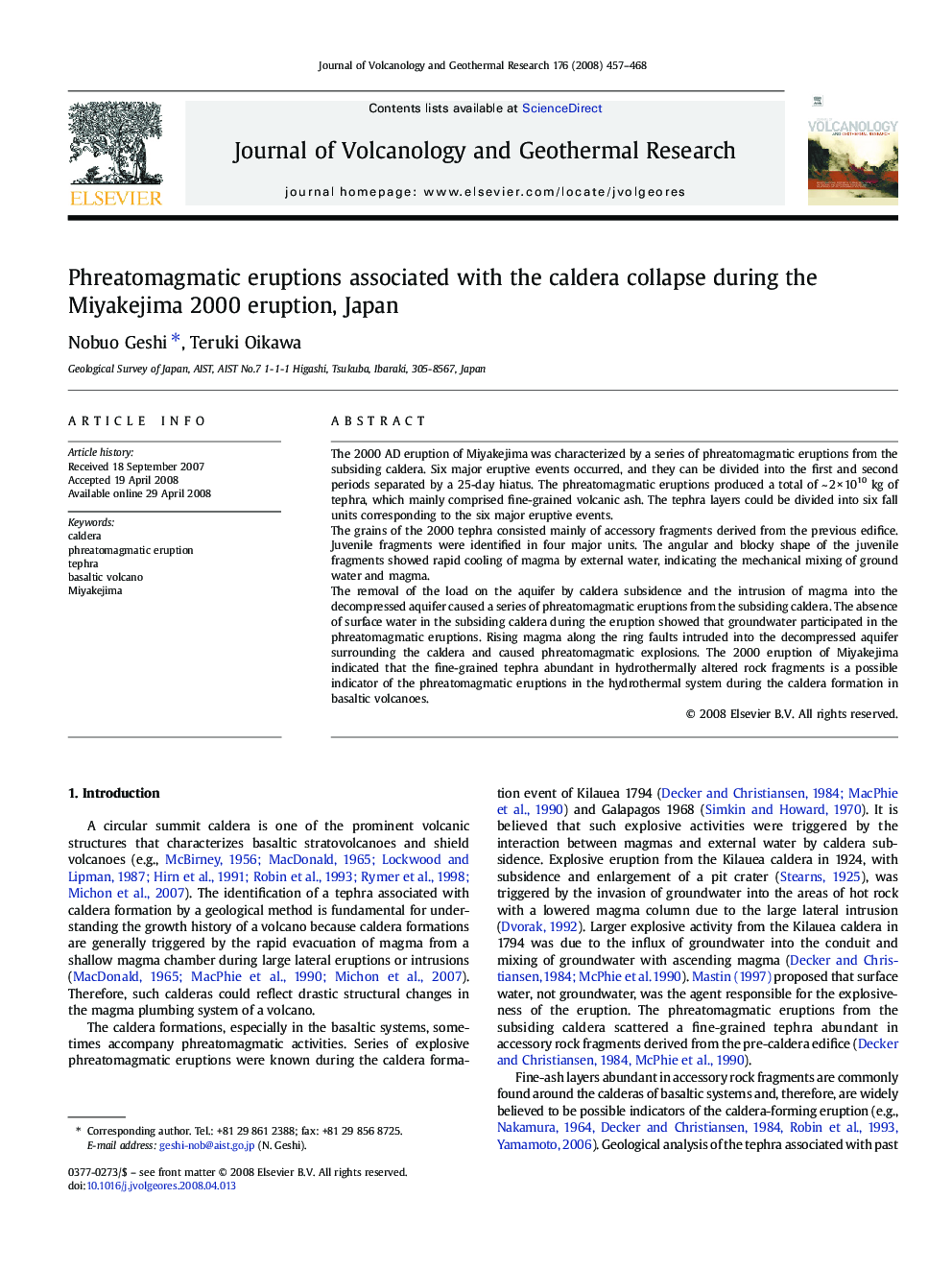| کد مقاله | کد نشریه | سال انتشار | مقاله انگلیسی | نسخه تمام متن |
|---|---|---|---|---|
| 4713546 | 1353899 | 2008 | 12 صفحه PDF | دانلود رایگان |

The 2000 AD eruption of Miyakejima was characterized by a series of phreatomagmatic eruptions from the subsiding caldera. Six major eruptive events occurred, and they can be divided into the first and second periods separated by a 25-day hiatus. The phreatomagmatic eruptions produced a total of ~ 2 × 1010 kg of tephra, which mainly comprised fine-grained volcanic ash. The tephra layers could be divided into six fall units corresponding to the six major eruptive events.The grains of the 2000 tephra consisted mainly of accessory fragments derived from the previous edifice. Juvenile fragments were identified in four major units. The angular and blocky shape of the juvenile fragments showed rapid cooling of magma by external water, indicating the mechanical mixing of ground water and magma.The removal of the load on the aquifer by caldera subsidence and the intrusion of magma into the decompressed aquifer caused a series of phreatomagmatic eruptions from the subsiding caldera. The absence of surface water in the subsiding caldera during the eruption showed that groundwater participated in the phreatomagmatic eruptions. Rising magma along the ring faults intruded into the decompressed aquifer surrounding the caldera and caused phreatomagmatic explosions. The 2000 eruption of Miyakejima indicated that the fine-grained tephra abundant in hydrothermally altered rock fragments is a possible indicator of the phreatomagmatic eruptions in the hydrothermal system during the caldera formation in basaltic volcanoes.
Journal: Journal of Volcanology and Geothermal Research - Volume 176, Issue 4, 15 October 2008, Pages 457–468